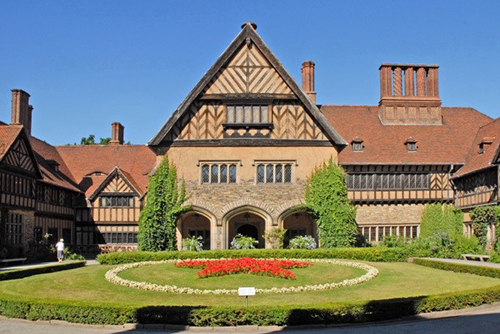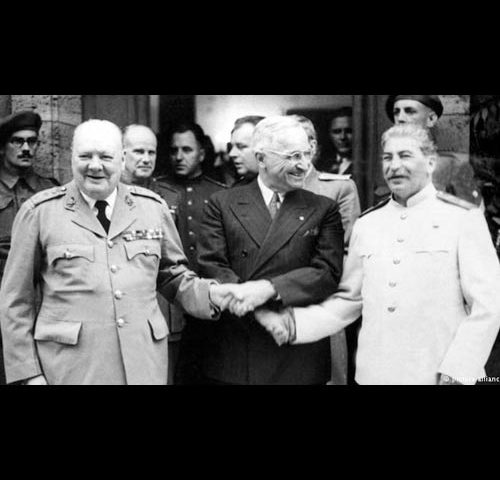The Road Not Taken

My Day at the National Archives
July 19, 2017
August Events That Changed the World
August 2, 2017Did you know that one of the most significant military proclamations was crafted seventy-two years ago today? If it had been accepted our history, the story of atomic energy, and Japan’s fate would have been very different. I am talking about the Potsdam Declaration that outlined the Japanese terms of surrender in World War II. It was definitely not the path that the Imperial Japanese military wanted to follow. Instead, they choose to keep fighting.
On July 17, 1945, the major heads of state from America, Britain, and Russia came together at the Cecilienhof Palace in Potsdam, Germany, to work out the postwar details following Germany’s unconditional surrender, May 7, 1945. American President Harry S. Truman, British Prime Minister Winston Churchill with his newly elected successor Clement Attlee, and Soviet Premier Joseph Stalin began hammering out the details at the aptly named, Potsdam Conference. This meeting which ran through August 2, 1945, would be the Big Three’s final World War II gathering, and eventually this location would be designated as the Palaces and Parks of Potsdam and Berlin UNESCO World Heritage Site.
This Conference was historic on several levels. First, important decisions were made that would impact Europe’s future including agreements about Germany’s economy, land boundaries, reparations, and war criminals. Second the leaders established a Council of Foreign Ministers that included the Big Three plus representatives from China and France. Then there was the dilemma over the ongoing conflict with Japan and possible strategies to end that war.
President Harry Truman, the British Prime Minister Clement Attlee, and Chiang Kai-shek, the Chinese representative met to outline the alternatives, and they were hopeful that Japan might be ready to surrender since their military strength had significantly weakened. So on July 26, 1945, they drafted the Potsdam Declaration that identified the thirteen terms for an unconditional surrender.
Today most people are not familiar with the Potsdam Declaration. That is true for me as I had never read this document until I found it at www.atomicarchive.com, the Atomic Archive website. As I slowly and thoughtfully read it, these three statements grabbed my attention:
“The Japanese military forces, after being completely disarmed, shall be permitted to return to their homes with the opportunity to lead peaceful and productive lives.
We do not intend that the Japanese shall be enslaved as a race or destroyed as a nation, but stern justice shall be meted out to all war criminals, including those who have visited cruelties upon our prisoners. The Japanese government shall remove all obstacles to the revival and strengthening of democratic tendencies among the Japanese people. Freedom of speech, of religion, and of thought, as well as respect for the fundament human rights shall be established.
We call upon the government of Japan to proclaim now the unconditional surrender of all Japanese armed forces and to provide proper and adequate assurances of their good faith in such action. The alternative for Japan is prompt and utter destruction.”
These were powerful words that offered peace, hope and restoration to the people of Japan. It was the appropriate and timely road to take. However, the military leaders were not ready to give up the fight; instead they ignored the Potsdam Declaration. Sadly, it would take two atomic bombs to bring these Japanese leaders to their knees and to finally agree to an unconditional surrender.
If the terms of the July 26, 1945, Potsdam Declaration had been accepted, this war story would have been very different. No atomic bombs would have been unleashed on Hiroshima, August 6 or Nagasaki on August 9. An estimated 105,000 Japanese citizens would not have been killed by these bombs. Neither would another 94,000 people been injured. It is indeed hard to fathom. Today on the Seventy-Second Anniversary of the Potsdam Declaration, I am vividly reminded of the road not taken.

Cecilienhof Palace seen from the commemorative courtyard, with the Soviet red star in the foreground. Photo by Jean-Pierre Dalbera , Paris, France

